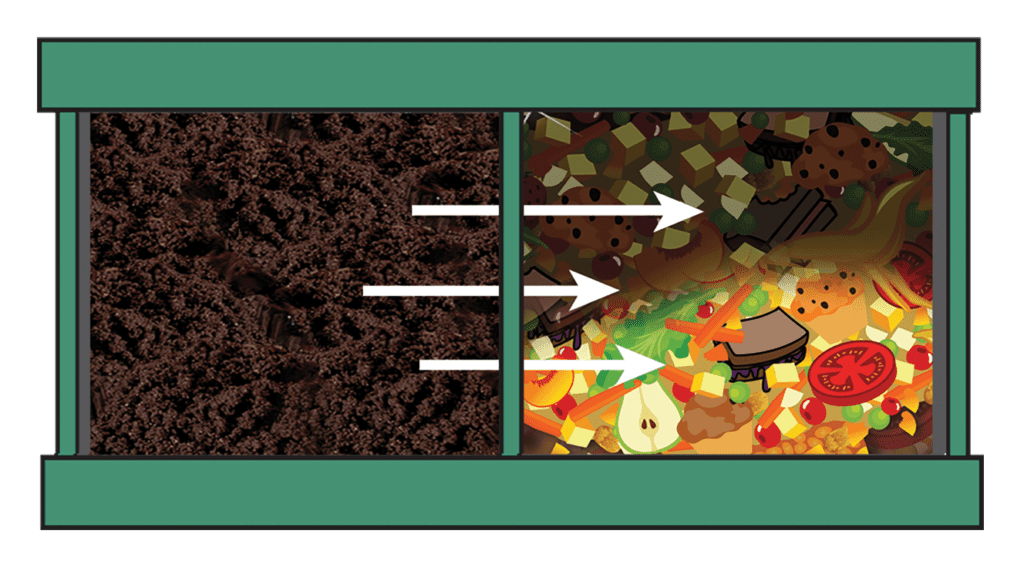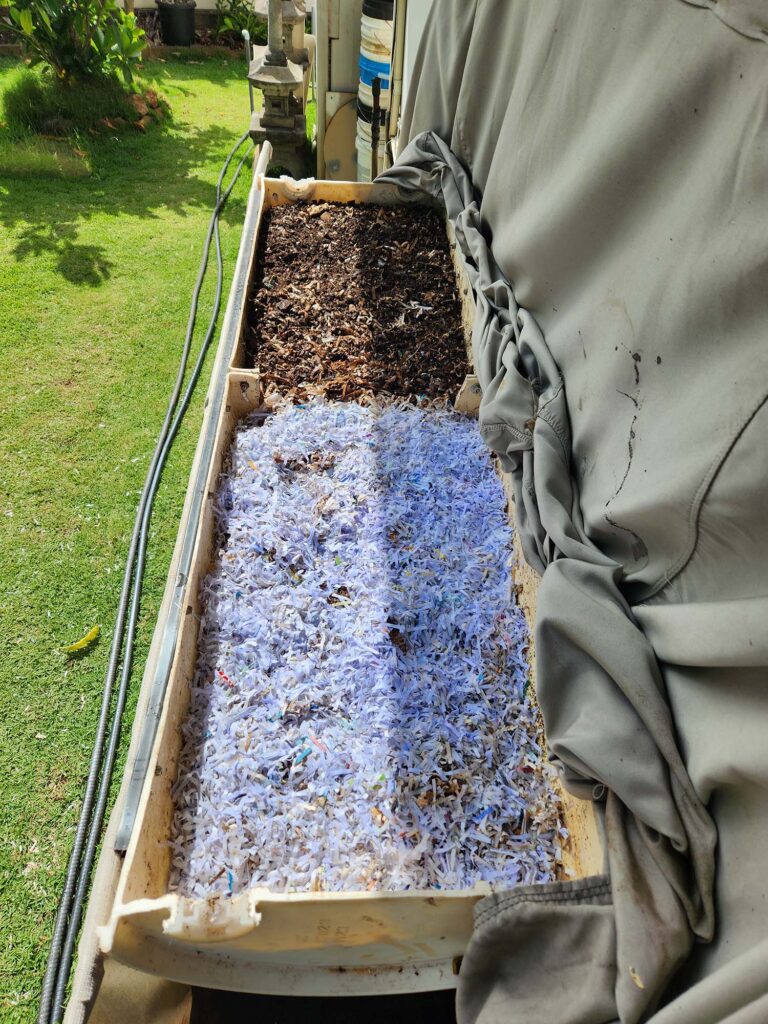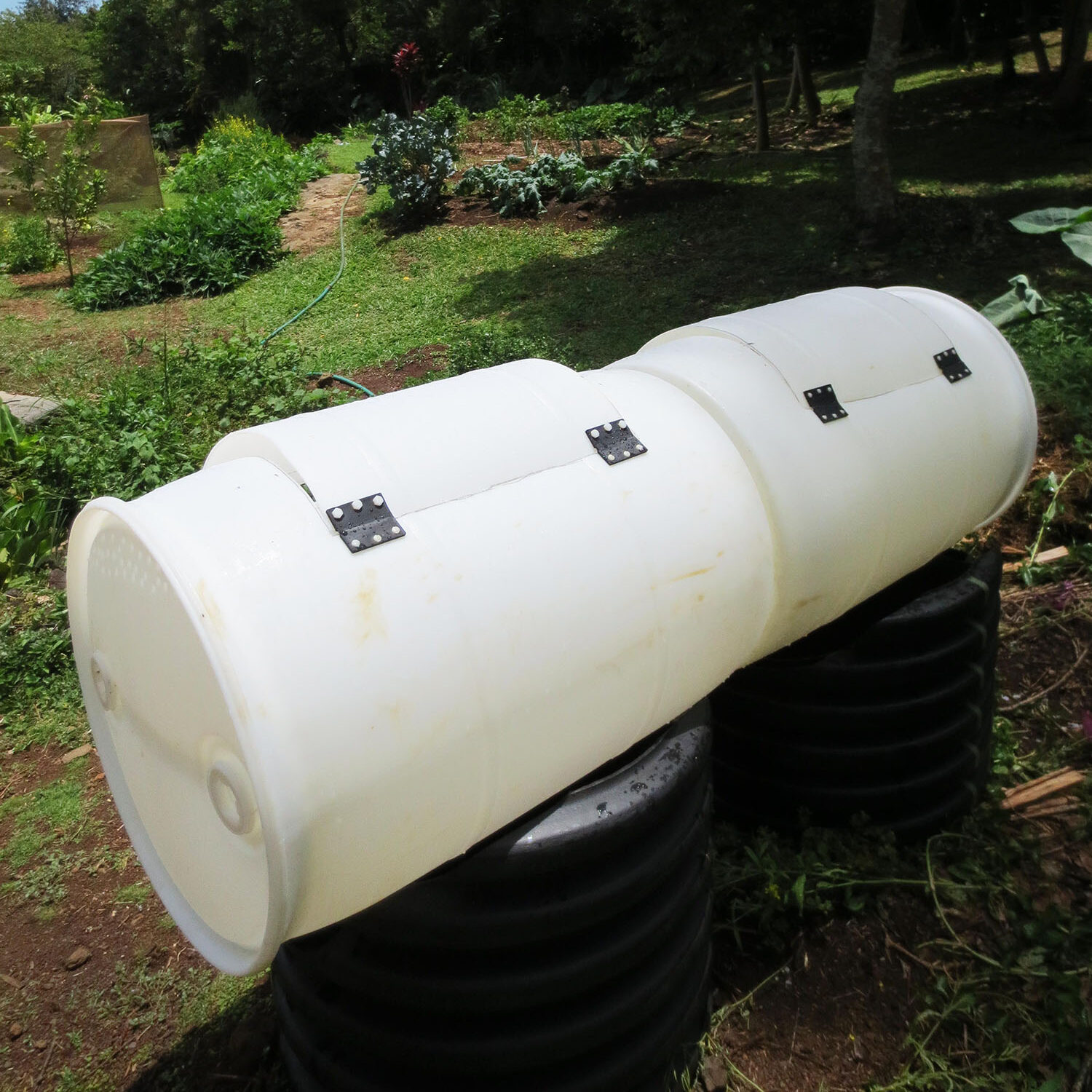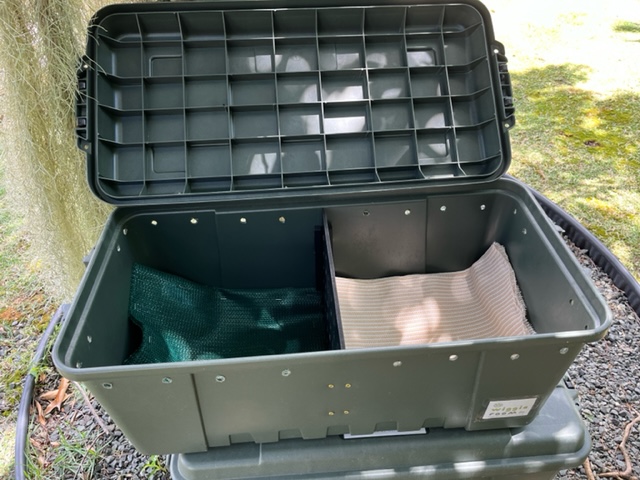LATERAL FLOW IS THE WAY TO GO
Most of us start out cultivating worms in a basic box bin, the classic plastic storage tote with pukas drilled in the bottom for drainage. Inexpensive and straightforward with minimal engineering to distract, the worms reliably display their natural behavior and over time teach us everything we need to know.
After six months to a year, box bin managers dump out the dark, heavy, moist contents and sort the worms from the finished vermicast using the mound-and-pick method. In the end, what a thrill to hold that giant worm ball! Oh, to feel that amazing life-force, that energy! To delight in our vermi-success!
Although most wormers will agree that a hand-harvest is a satisfying and informative experience, frankly, it takes HOURS and HOURS and creates a huge mess. Most wormers – after a fun but grueling hand-harvest or two – start looking for an easier way.
The Holy Grail of vermicomposting is separating the worms from the finished vermicast. None of the multitudes of worm bin engineers and designers have nailed it 100%, but with user observation and practice, all manufactured worm systems work pretty well. There are basically three kinds: stacking-tray, continuous-flow, and lateral-flow – my personal favorite.
The principle of lateral-flow is simple – worms flowing, or moving, from side to side. The bin is typically an elongated container with a divider with pukas drilled in it. Feed your worms on one side for six months, then stop, put fresh bedding on the other side and start feeding them there. Worms will move through the pukas to find the fresh food leaving their castings behind. Six months later, harvest the finish vermicast – nearly worm-free – replace with fresh bedding and start feeding on the new side. Every six months, switch sides – harvest and re-bed.

The fancy lateral-flow bins we use at our Windward Zero Waste Schools, constructed from HDPE irrigation pipe made to last for generations, are quite expensive. So we’re excited that Worm Ohana members have come up with Do It Yourself versions that work just as well! Take a look at the examples below.
Keith Matsushima started with 4 ounces of worms, fed fearlessly, and quickly went big! He fabricated two sliced-barrel-kine lateral flow systems that regularly grind through 25-30 lbs of food waste a week.

Tom Gibson connected two recycled plastic barrels to make this elegant model, also for large weekly feedings.

Phil Doerr designed a small lateral-flow bin PERFECT for colonies fed 1-4 pounds a week. It’s called the Wiggle Room, Jr. and it works great! Phil will sell you a WRJ complete with puka-ed bin and divider, bricks for elevation, and two shadecloth bin blankets, all for $120. Get in touch if you’d like to order one: <pjdoerr2@yahoo.com>

Do you have a DIY lateral-flow bin that you love? Please share and post your photo/story here. We are always looking for creative, innovative ideas to make vermicomposting even more fun and accessible for all.
